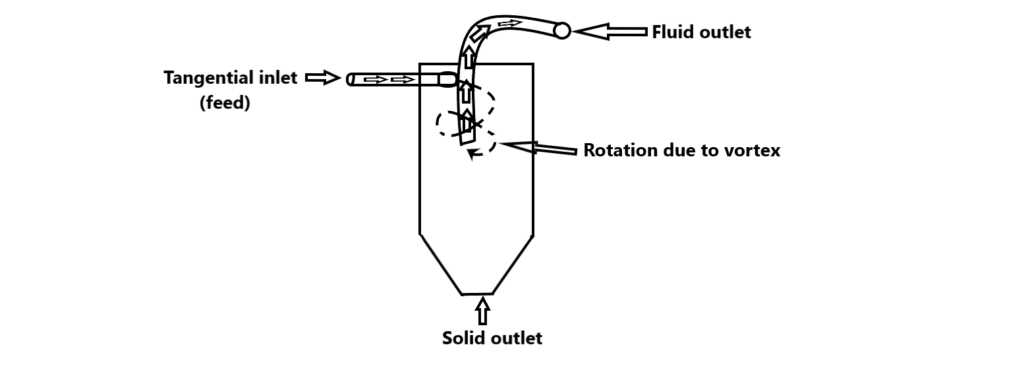Learn cyclone separator principle, construction, working, uses, advantages and disadvantages. It helps to separate solids from gases or liquid.
What is cyclone separator?
In pharmacy and pharmaceutical manufacturing, a cyclone separator is a type of equipment which separate particles or solids from gases or liquids.
It is a widely used device for particle size classification and particle recovery in various pharmaceutical processes.
Principle
The principle of cyclone separator is based upon centrifugal forces. Because this centrifugal force helps this separator to separate solids from gases by using centrifugal force. The separation process depends on size and density of particles.
Depending on the fluid velocity, it can separate all types of particles. It is also possible to separates fine particles from fluid.
Construction

- It consists of a cylindrical vessel with a conical base, which is vertically placed and made of suitable materials like stainless steel, carbon steel and aluminum.
- A tangential inlet is fitted with the upper part of the vessel.
- An outlet adjusted at the base of vessel.
- A fluid outlet arranged at the center of the top portion of separator.
Cyclone separator working
- Introduce the feed tangentially at a high velocity.
- Rotatory movement occurs in vessel.
- Due to continues rotation, centrifugal force and vortex takes place in vessel, which throws the solid to the walls.
- For the speed of air, the particles fall to the conical base and discharged through the solid outlet.
- The fluid or gases is discharged from the center by fluid outlet.
Uses
Here is some application of cyclone separator:
- To separate solid from gases.
- For Size separation of solids from liquids.
- For separation of heavy or coarse particles from fine dust.
Advantages
- It can achieve high separation efficiencies.
- Less time requires for operation.
- Easy to maintenance.
- Can handle high flow rates.
- No moving parts during operation.
- Low capital cost.
- Easy to install.
Disadvantages
- Limited particle size range (5 microns).
- Limited effectiveness for smaller particles.
- Low flexibility.
- High power consuming operation.
- This machine may not be effective for separation of particles with low density or high moisture content.
ALSO READ What is Reynolds number in flow of fluids? Manometers definition types and uses.
